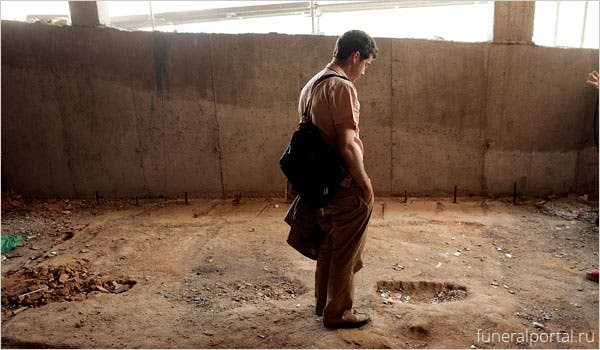Jeremy Hainsworth

Photo: Glacier Media
“Please respect our sacred site,” reads the sign at a Squamish First Nation graveyard nestled among cedars beside North Vancouver’s burbling Mosquito Creek.
What’s tragically ironic is the sign’s language is almost gone, defaced with graffiti.
The cemetery, containing graves of children who died at St. Paul’s Indian Residential School, is fenced and gated. But the fence is battered, people having forced their way in.
In a way, it’s emblematic of what happened to the estimated 3,200 children snatched from their families nationwide who died in Indian residential schools, now a national focus as Canada marks National Indigenous Peoples Day June 21.
The issue of the horrors of the schools has put Canada into a stark global spotlight after the remains of 215 children were located at the Kamloops school. However, Kamloops is just one of 18 that operated in B.C., in addition to others across Canada, where mortality rates ran into the double digits.
Many are asking why a school would be designed with a cemetery.
Simon Fraser University Indigenous studies Prof. Eldon Yellowhorn said many schools’ architectural drawings included cemeteries.
“It wasn’t secret that there were going to be deaths,” said Yellowhorn, principal investigator of a team readying to identify children buried in unmarked graves at Manitoba’s Brandon Indian Residential School. “It was well known,” he said.
Now, St. Thomas Aquinas Secondary School is on the site of the St. Paul’s school several blocks from the cemetery.
Son of a residential school survivor, North Vancouver School District’s principal and administrator of Indigenous education Brad Baker supports examination of the old St. Paul’s site and others.
“Many of my Elders went to that school,” he said. “We know. We've heard stories that kids passed away at St. Paul's and were buried there. We've always known that as Squamish peoples and Indigenous peoples.”
Indeed, many schools had cemeteries with graves of children who died as a result of violence at the hands of nuns and priests or from poor care and malnutrition. Others were children who died at birth, offspring of young girls sexually assaulted by priests. Some of those babies may not have made it to cemeteries, their tiny bodies cast into furnaces.
But, it’s also necessary to remember the incidence of disease such as typhoid was also rampant at the time. Sick children would arrive at the schools and infect others. Some would return home and infect people there.
That said, as late as 1941-45, the residential school death rate was 4.9 times higher than the general rate. By the 1960s, residential school rates had dropped from historic highs, but were still double those in the general school-aged population.
Moreover, many of the gravesites remained mysteries even to classmates of children who disappeared from the schools. Others have slid into neglect, children forgotten, graves unmarked.
Some children’s bodies were returned to their communities and are buried in community cemeteries, Yellowhorn said, citing Mission and Chilliwack.
Now, calls from across Canada grow louder for the graves to be found, the children remembered.
“We need to be grateful to these children; they have given us a gift,” BC Assembly of First Nations Knowledge Keeper and ambassador for Reconciliation Canada Chief Robert Joseph said. “These children have revealed themselves at an important time to give us all a wake-up call. It is time for change.”
And, while Prime Minister Justin Trudeau has called on the Roman Catholic Church to take responsibility for the school deaths, it remains to be seen who in Ottawa is responsible for investigating the graves.
There is a hitch, though. While the Truth and Reconciliation Commission of Canada examining the schools was a federal endeavour, investigating deaths is a provincial responsibility. How governments will work together remains to be seen.
“We have offered any assistance within our mandate and, at the request of the band council, are now awaiting further information about their consultant’s report,” BC Coroners Service spokesman Ryan Panton said.
However, when Glacier Media asked the federal Department of Justice about cooperation, the query was referred to the Department of Crown-Indigenous Relations and Northern Affairs Canada. That ministry then referred questions to the RCMP.
If the bodies are to be exhumed, identifying the remains becomes a challenge.
“You have to do a lot of research,” says Megan Bassendale with Forensics Guardians International. “You need to know who’s missing, who’s unaccounted for and who’s known to be dead.”
In the Kamloops case, she said, “It’s a huge cemetery with many individuals known to be in that location.”
To start, she said, as much medical information as possible is collected for identification — height, broken bones, chipped teeth.
“Anything that marks one person from another,” Bassendale said.

Indian residential schools were designed with cemeteries
https://biv.com/article/2021/06/indian-residential-schools-were-designed-cemeteries
Indian residential schools were designed with cemeteries
https://www.timescolonist.com/2.3463/2.3973/indian-residential-schools-were-designed-with-cemeteries...
Schools built with cemetery
https://www.nytimes.com/2009/07/02/world/europe/02toledo.html








